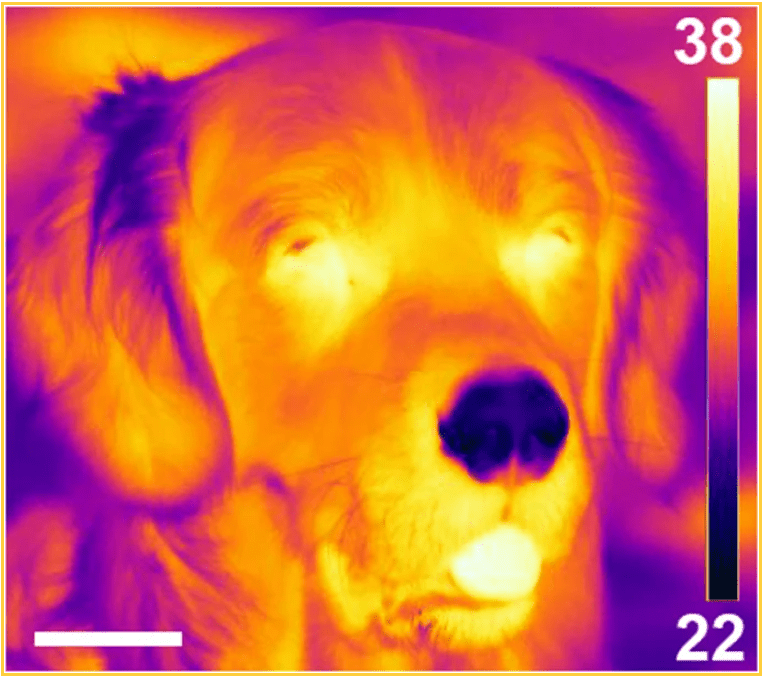
Most dog owners love to play and snuggle with their canine pets. Inevitably, these petting sessions often involve your dog licking your face or bumping their nose on your skin. Their snoot can feel cold and wet, other times it might be warm and dry. This may make some dog owners wonder: is it normal? Should I talk to a vet?
According to researchers from Eötvös Loránd University in Budapest, Hungary, both wet and dry noses are normal.
A dog’s nose will typically be warm and dry when they sleep. Immediately after they wake up, dogs lick their nose, which becomes cold and wet.
Previously, some have proposed that a dog’s cold nose helps canines regulate their body temperature. However, a dog’s nose is too small relative to their body size to offer any tangible advantage in terms of thermoregulation.
Another hypothesis that might explain the wetness of canine snouts suggests that a cooler nose aids carnivores in detecting prey. Anna Bálint and colleagues at Eötvös Loránd decided to investigate this latter hypothesis and measured the temperature of various dog noses, as well as those of horses and mooses.

In one experiment, the researchers trained three pet dogs to choose a warmer object, which had about the same temperature as a potential prey, over an object at room temperature. This suggests that a dog’s nose is indeed capable of detecting heat from relatively distant prey, even if the thermal radiation is weak.
“The ability to sense weak thermal radiation has the potential of conveying valuable sensory information to an animal preying mainly on endothermic animals. The ability to sense such radiation is known in insects (Black fire beetle, Melanophila acuminata), reptiles (certain snake species: Crotalinae, Boidae) and one species of mammal so far, the common vampire bat, Desmodus rotundus), which can detect skin areas richly perfused with blood and thus suitable for biting after landing on a host anima,” the researchers wrote.
After this behavioral trial, the researchers also performed a neural experiment to see what happens inside the brain when a cold nose is engaged in heat detection.
The researchers placed 13 dogs inside a functional MRI scanner and analyzed their brain waves as the canines were presented with a box containing warm water and an insulating door. When the insulating door was open, the dogs’ brains had a higher response in the somatosensory association cortex, a brain region that processes various sensory stimuli.
Taken together, the authors claim that the findings suggest that dogs and other cold-nosed animals employ heat detection in their hunting routines, in addition to their already keen sense of smell.
The findings appeared in the journal Scientific Reports.






